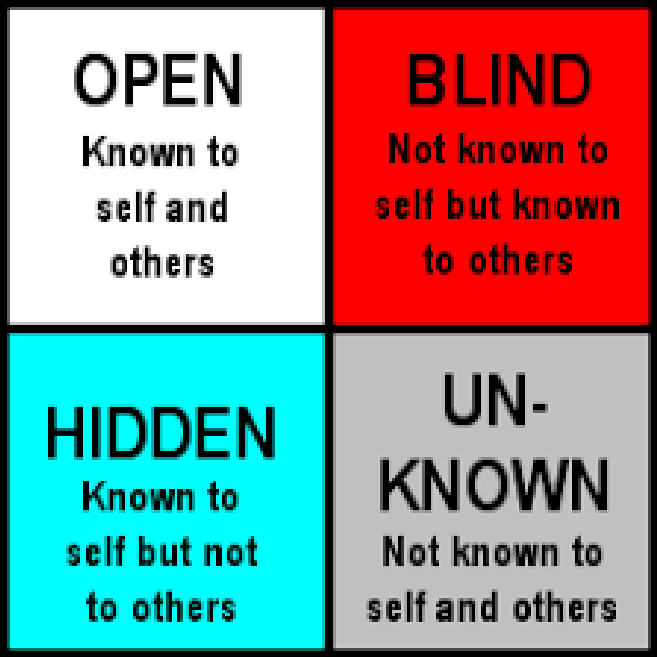30th September 2020
I was first introduced to Joharis Window. many years ago when I worked for Wella. A fascinating tool that really opens up your mind in a new and interesting way.

Joharis window is used to improve your perception about yourself and other people. The concept is based on two basic ideas:
1: Trust can be gained by sharing information about you to other people and learning about yourself from their feedback. Each person is represented by the information learnt through four window panes, each of the panes signifies personal information, how we feel, what motivates us and if the information is known or unknown to us and (or) others in the four differing viewpoints.
2: Two of the panes represent (your)self and the others represent the part unknown to you but known to others. The information transfers from one pane to the other as the result of earned trust, generated from socializing and the feedback received from other members of the group.
American psychologists Joseph Luft and Harry Ingham Joharis Window in the 50’s.
The concept is all about self awareness. It’s important you read fully the information readily available online and ‘practice’ before you attempt to use the model in any training environment. You must also be prepared for some of the information that is revealed to be sensitive and sometimes upsetting, this is a natural part of the process you go through when analysing the thoughts and emotions that are revealed.

The information below comes from a useful website communcationtheory.org (with thanks)
1. Open/self-area or arena – Here the information about the person his attitudes, behaviour, emotions, feelings, skills and views will be known by the person as well as by others. This is mainly the area where all the communications occur and the larger the arena becomes the more effectual and dynamic the relationship will be. ‘Feedback solicitation’ is a process which occurs by understanding and listening to the feedback from another person. Through this way the open area can be increased horizontally decreasing the blind spot. The size of the arena can also be increased downwards and thus by reducing the hidden and unknown areas through revealing one’s feelings to other person.
2. Blind self or blind spot – Information about yourselves that others know in a group but you will be unaware of it. Others may interpret yourselves differently than you expect. The blind spot is reduced for an efficient communication through seeking feedback from others.
3. Hidden area or façade – Information that is known to you but will be kept unknown from others. This can be any personal information which you feel reluctant to reveal. This includes feelings, past experiences, fears, secrets etc. we keep some of our feelings and information as private as it affects the relationships and thus the hidden area must be reduced by moving the information to the open areas.
4. Unknown area – The Information which are unaware to yourselves as well as others. This includes the information, feelings, capabilities, talents etc. This can be due to traumatic past experiences or events which can be unknown for a lifetime. The person will be unaware till he discovers his hidden qualities and capabilities or through observation of others. Open communication is also an effective way to decrease the unknown area and thus to communicate effectively.

Browse the internet for free downloads, handouts and examples that can help you understand fully the benefits of using this ‘model’ in your training with team members.
Here’s a version that is easy to use and follow: